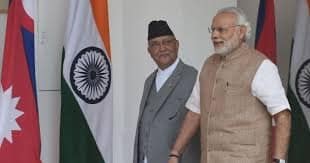
Historical and Cultural Context
India and Nepal share a unique bond, often described as “Roti-Beti ka Rishta” (a relationship of bread and familial ties), due to open borders, shared Hindu and Buddhist heritage, and centuries of people-to-people connections. The 1950 India-Nepal Treaty of Peace and Friendship formalized this closeness, allowing reciprocal rights for citizens and giving Nepal access to Indian arms. However, many Nepalis now view this treaty as unequal, arguing it compromises their sovereignty by tying them too closely to India’s security and economic orbit.
Points of Tension
- Economic Dependence and Blockades: Nepal relies heavily on India for trade, fuel, and essential goods, with over 60% of its imports coming from India. This dependence has bred resentment, especially during perceived overreach. The 2015 unofficial blockade, when India restricted fuel and goods amid Nepal’s constitutional crisis over Madhesi rights, was a turning point. Nepal saw it as India meddling in its internal affairs, fueling anti-India sentiment. Though India denied imposing a formal blockade, citing security concerns, the damage to trust was significant.
- Territorial Disputes: The Kalapani-Lipulekh border issue remains a flashpoint. Nepal claims this region, citing historical treaties, while India controls it, arguing it’s vital for security. Tensions flared in 2020 when Nepal updated its map to include Kalapani, Lipulekh, and Limpiyadhura, a move India called unilateral. India’s road construction to Lipulekh in 2020, easing access to Kailash Mansarovar, further irked Nepal, which feared losing economic leverage from pilgrimage routes.
- Perception of Interference: Nepal often accuses India of a “big brother” attitude, meddling in its politics. For instance, India’s lukewarm stance on Nepal’s 2015 constitution, seen as favoring Madhesi groups near the Indian border, was interpreted as interference. Similarly, delays in accepting the Eminent Persons Group (EPG) report, meant to revise bilateral ties, deepened the trust deficit.
- China’s Growing Role: Nepal has increasingly turned to China to counterbalance India, especially through the Belt and Road Initiative (BRI). Projects like the Kerung-Kathmandu railway, though slow-moving, signal Nepal’s intent to diversify. India views this with suspicion, fearing encirclement via China’s “String of Pearls” strategy, while Nepal sees it as asserting autonomy.
Shift in Relations
The shift in India-Nepal relations isn’t outright hostility but a recalibration. Under PM Narendra Modi’s Neighbourhood First policy, launched in 2014, India aimed to strengthen ties with neighbors through connectivity, trade, and aid. Early moves—like Modi’s 2014 visit to Nepal, the first by an Indian PM in 17 years—were promising. Projects like the Motihari-Amlekhgunj oil pipeline and post-2015 earthquake aid (over $1 billion) showed commitment. However, setbacks like the 2015 blockade and border disputes undermined these efforts.
Nepal’s political instability adds complexity. Leaders like K.P. Sharma Oli, often labeled pro-China, have leveraged anti-India rhetoric (e.g., the 2020 map issue) to rally domestic support. Yet, even pro-India parties like the Nepali Congress navigate a delicate balance, prioritizing sovereignty amid public sentiment.
Neighbourhood First Policy: Successes and Challenges
India’s Neighbourhood First policy seeks peaceful, cooperative ties with neighbors, but its execution with Nepal reveals gaps:
- Successes: Enhanced connectivity (e.g., power trade agreements, with India buying hydropower from Nepal) and cultural exchanges (e.g., Lumbini projects) show progress.
- Challenges: Inconsistent follow-through on projects, perceived insensitivity to Nepal’s autonomy, and competition with China dilute India’s influence. The policy’s one-size-fits-all approach struggles with Nepal’s specific geopolitical context.
Current Sentiment (March 2025)
As of now, Nepal doesn’t “hate” India universally—economic ties remain strong ($7.87 billion in trade in 2023-24), and millions of Nepalis work in India. However, frustration over sovereignty, border issues, and past grievances persists. Posts on X from 2020 reflect lingering bitterness over the blockade, while recent analyses suggest that Nepal’s non-aligned stance—balancing India, China, and the U.S.—is hardening. With his pro-China leanings, Oli’s return in 2024 may test ties further, though pragmatic cooperation continues.
Conclusion
The India-Nepal relationship is less about hatred and more about Nepal asserting independence amid asymmetry. India’s Neighbourhood First policy has potential but needs tailored, trust-building measures—faster project delivery, dialogue on disputes, and less paternalism—to mend the rift. For Nepal, diversifying ties is strategic, not a rejection of India. Both nations struggle to navigate this shift without losing their historic bond.





